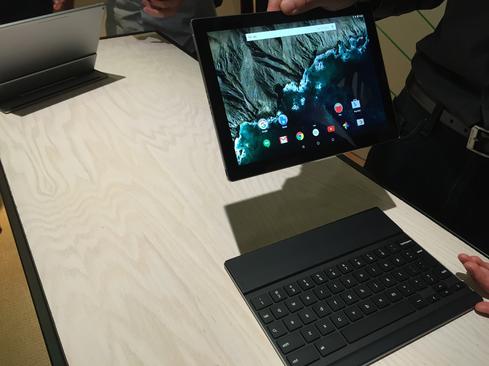HTC's One A9 Smartphone Apes iPhoneHTC's One A9 Smartphone Apes iPhone
The attractive smartphone from HTC will ship with Marshmallow, but may look a bit too familiar.


Google's Android Event: Pixel Tablet, Served With Marshmallow
Google's Android Event: Pixel Tablet, Served With Marshmallow (Click image for larger view and slideshow.)
HTC is taking another shot at the smartphone market with the One A9, a sub-flagship that hopes to compete on design and price more so than specs. The phone closely resembles the Apple iPhone, but HTC argues Apple is the copycat.
The One A9 employs several core HTC design principles. It features a unibody aluminum chassis with Gorilla Glass forming the face. The One A9 is slim, light, and classy thanks to high-quality materials. It makes marked changes from the One M9 due to its flat rear surface, rounded edges, and fingerprint sensor.
There's no questioning its HTC heritage. It's a bit of a shame, really, that the appearance matches the iPhone 6/6s so distinctly. The shape of the corners, design of the rear panel, and protruding camera module give the One A9 an iPhone-alike look that has the Internet howling.
Appearance aside, there's a lot to say about the One A9. The screen measures 5 inches and has full HD resolution. HTC has shied away from overlarge phones for several years now, and has instead focused on making handsets that are easy to hold and use. The 5-inch screen gives the One A9 a more comfortable footprint for daily use.
The phone is powered by an octa-core Snapdragon 617 processor with 3 GB of RAM. The 617 is an interesting choice. Competing flagships -- including HTC's own One M9 -- run with Qualcomm's 800 series processors. The 617 is less capable than the 801, 805, or 808, but also less expensive. The 617 is a 64-bit chip with four cores at 1.5 GHz for high-power tasks and four cores at 1.2GHz for low-power tasks.
The version of the A9 sold in the US will have 32 GB of storage, with support for memory cards up to 2TB (not that those exist yet). HTC likely saved a few dollars by selecting a 13-megapixel sensor, which is a drop from the 20-megapixel sensor on the One M9. The company continues to use an UltraPixel sensor for the front-facing camera. The One A9 is limited to capturing 1080p HD video.
HTC was smart to install a fingerprint sensor on the phone. The sensor is placed on front (unlike the back, as it was on HTC's 2013-era One Maxx). The fingerprint sensor does more than simply unlock the handset, and that's largely due to Android 6.0 Marshmallow.
[Would you like a smartwatch with that? Read Motorola Moto 360 Review: A Worthy Second Act.]
Android 6 natively supports fingerprint sensors, and in fact Google's new Nexus-branded devices include a tool called Nexus Imprint for managing the security of apps, mobile payments, and more. The One A9's fingerprint sensor is compatible with Android Pay, and can also be put to use in securing individual apps, folders, and files.
One feature the A9 has that the iPhone 6s doesn't? A reasonable price.
Apple's iPhones range from $649 up to $949, depending on the model. The One A9 costs $399.
Moreover, HTC is selling the phone unlocked with 12 months of free Uh Oh Protection (screen breakage insurance), and six months of Google Play Music for free. Apple's AppleCare costs $129 extra and requires a $100 deductible for screen repairs.
The HTC One A9 is already available for preorder and is expected to ship in early November. AT&T, Sprint, and T-Mobile will each sell the handset, too, with financing options available.
About the Author
You May Also Like






